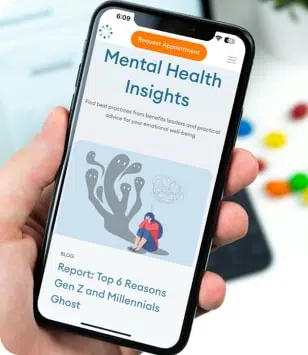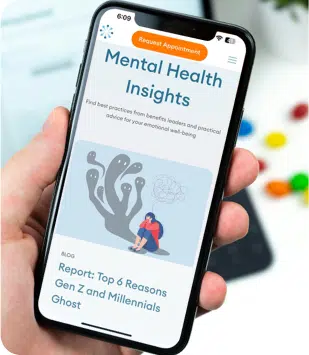How To Recover From Burnout?

Manageable and short-term stress can increase alertness and give you the focus to hit a tight deadline. But left unchecked, chronic stress can result in burnout, leading to complete physical, mental, and emotional exhaustion. In this article, we talk about recognizing burnout and five self-care strategies to kickstart your burnout recovery.
What Is Burnout And What Are The Causes?
The World Health Organization (WHO) recognizes burnout as an ‘occupational phenomenon’. It’s a syndrome but not an official medical condition. Essentially, burnout is the result of chronic workplace stress that’s left to wreak havoc. According to WHO, burnout is characterized by three symptoms:
- Energy depletion or exhaustion
- Increased mental distance from your job or cynicism around your job
- Decreased ability to produce results professionally
Burnout is a state of emotional and physical exhaustion. You are done. You can feel drained, helpless, and isolated. You can experience burnout from any long-term stress like:
- Working a stressful job
- Working too much without enough downtime to relax
- Lack of support system during stressful times
- Feeling like you have no control over your work
- Having too many responsibilities without enough support
Lifestyle and work can contribute to burnout, as well as personality traits. Typically, high achievers with type A personalities can be at a higher risk of developing burnout as they tend to have:
- Perfectionist tendencies – nothing is ever good enough
- Control issues – need to be in control and resistant to delegation
One five-year study in the UK found that 20% of top-performing leaders of UK businesses experience burnout. Often, high performers seek therapy because of the pressure to stay on top and the higher risk of burnout.
Whats the difference between burnout and stress?
Although burnout is typically from chronic and long-term stress, burnout and stress are different. Stress can often feel like there’s too much going on, too much pressure, and the demand on you is too high. Stress is usually shorter, whereas burnout can be for much longer periods and take over your life. Burnout is the state of exhaustion that’s brought on by prolonged and untreated stress.
Recognizing The Signs Of Burnout In Yourself And Others
Burnout and stress are at an all-time high, with the American Psychological Association’s 2021 Work and Well-being Survey finding that nearly three in five employees report work-related stress. A staggering 32% reported emotional exhaustion, and 44% reported physical fatigue, a jump of 38% since 2019.
Understanding how stress affects physical health and learning to recognize burnout signs is crucial in today’s chaotic world. Unchecked stress not only impacts you, but it can affect your relationships with partners, friends, and family.
You can split signs of burnout into physical, emotional, and mental symptoms. Recognizing burnout is the first step to seeking help and getting back on the road to better mental health and well-being.
Physical signs of burnout:
- More frequent illness and lower immunity
- Exhaustion
- Frequent headaches
- Changes in eating or sleeping patterns
- Irritability, anger, or sadness
Emotional and mental symptoms of burnout:
- Self-doubt
- Cynicism
- Feeling hopeless or sense of failure
- Feeling alone
- Lack of motivation
It’s also important to watch out for unhealthy coping mechanisms. This could include isolating yourself from others and turning to food, alcohol, or drugs to get through it. Someone experiencing burnout from the workplace may start avoiding work altogether or take their frustrations out on those around them.
Burnout Recovery: 5 Strategies For Taking Care Of Yourself
When it comes to burnout recovery, ignoring it won’t help you. If you don’t remove the stress or work on building resilience to stress, it can just cause you more harm in the future. Burnout is a problem that more people are struggling with, and it often happens alongside mental health issues like depression and anxiety. The good news is that you can recover from burnout and return to a life you love.
- The Importance Of Self-Care For Stress Management
When you’re experiencing burnout, taking care of yourself is important. Self-care not only supports your own health but is also essential for managing stress so it doesn’t take as big a toll on your health. Strategies to help you reset often revolve around creating self-care routines that increase your ability to manage stress and support your overall well-being. Try these self-care tips:
- Get enough restful sleep
- Spend time with friends and family
- Get some regular exercise
- Drink plenty of water
- Add meditation or mindfulness to your day
- Eat nutritious foods
- Learning To Say No And Setting Boundaries
Some immediate changes may be necessary with burnout, such as changing your work environment. Start prioritizing your well-being by setting boundaries in your work and personal life. That means saying no without guilt. You can say no while being polite. But the important thing is not to take on additional responsibility while recovering.
Give your body and mind the time to recover. By saying no, the aim is to set healthy boundaries that, over time, allow you to show up for yourself, your work, and the people around you.
- Building A Strong Support System For Recovery
Several large studies found that social support can positively impact the effects of stress. One study of healthcare professionals found that social support was associated with lower levels of burnout. High-quality and positive social support can also enhance stress resilience.
Try talking to your friends and family about burnout. Consider seeking professional help and speak to a therapist. Therapy for burnout can be one-to-one or in a group setting. A therapist can help you learn how to reduce stress, develop healthy coping strategies, and address any other mental health concerns.
- Rediscovering Passion And Purpose
Once an individual recognizes burnout, it often leads to a phase of re-evaluation. What are your goals? What is most important to you? Is it to spend more time with your family? Or have a healthy work/life balance?
Life after burnout is about finding meaning in your work and taking the time to rediscover your passion. You’re replenishing all those resources that have been depleted from your body and mind.
Research shows that weekend activities are essential for improving work‐related well‐being indicators. You can rediscover joy and ignite passion again. Reassess your aspirations and make a plan, then chip away at it slowly. This could be adopting a new morning routine, adding creativity to your workday, or just getting outside in nature. Seek support and lean on professional help to help you determine your next steps while on the road to recovery.
- Developing Healthy Habits To Prevent Burnout
While burnout can leave you feeling exhausted and not wanting to move much, exercise may help to lower stress and anxiety levels. Exercise can reduce the effects that stress has on the body, encouraging better mental health and cognition.
As you recover from burnout, you can start developing healthy habits that help you now and in the future. Building resilience helps to protect you from the impact of stress. Good sleeping patterns, eating habits, regular exercise, and asking for help when you need it help prevent future burnout. The earlier you can spot burnout, the quicker you can take a step back and implement modifications to your life that slow it down, allowing you to regain control.
If you’re experiencing burnout or have any mental health concerns, book an appointment online with Thriving Center of Psychology to start your therapy journey today. We have offices in most major cities, including Boston, LA, and Fort Lauderdale.

The Link Between Social Media and Depression
In today’s world, scrolling through social media is as routine as brushing our teeth. We open apps out of habit — on the train, in bed, while waiting in line. Platforms like Instagram, TikTok, and Facebook keep us connected, informed, and entertained.

Signs Depression is Taking a Toll on Your Relationship
Depression can impact every part of a person’s life, from their work to their romantic relationships. Dealing with depression can take its toll on both the person with depression and the supporting partner. If you’re worried that depression is affecting your relationship, understanding its impact is an important first step.

Anxiety Attack and Panic Attack Differences
’s easy to mix up anxiety and panic attacks. While anxiety attacks and panic attacks do have overlapping symptoms, they are different. Let’s get into the differences between anxiety and panic attacks so you can be in a better position to get the help you need.

How to Overcome Procrastination and Anxiety
Procrastination is a very typical human experience. At some point or another, we’re all guilty of putting off that task we know is important. Maybe it’s household chores, filling your taxes, paying bills, or some other mind-numbingly boring task.




